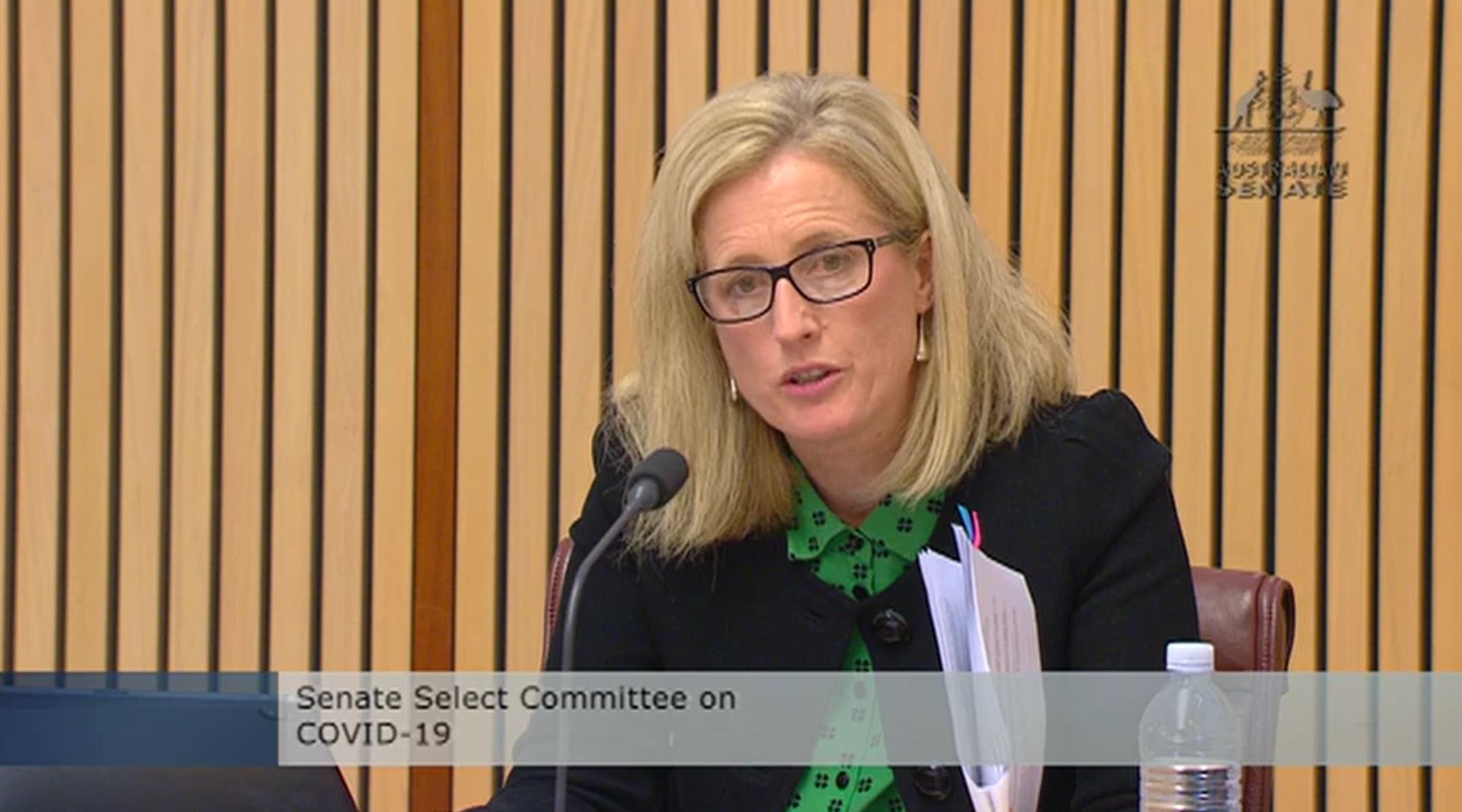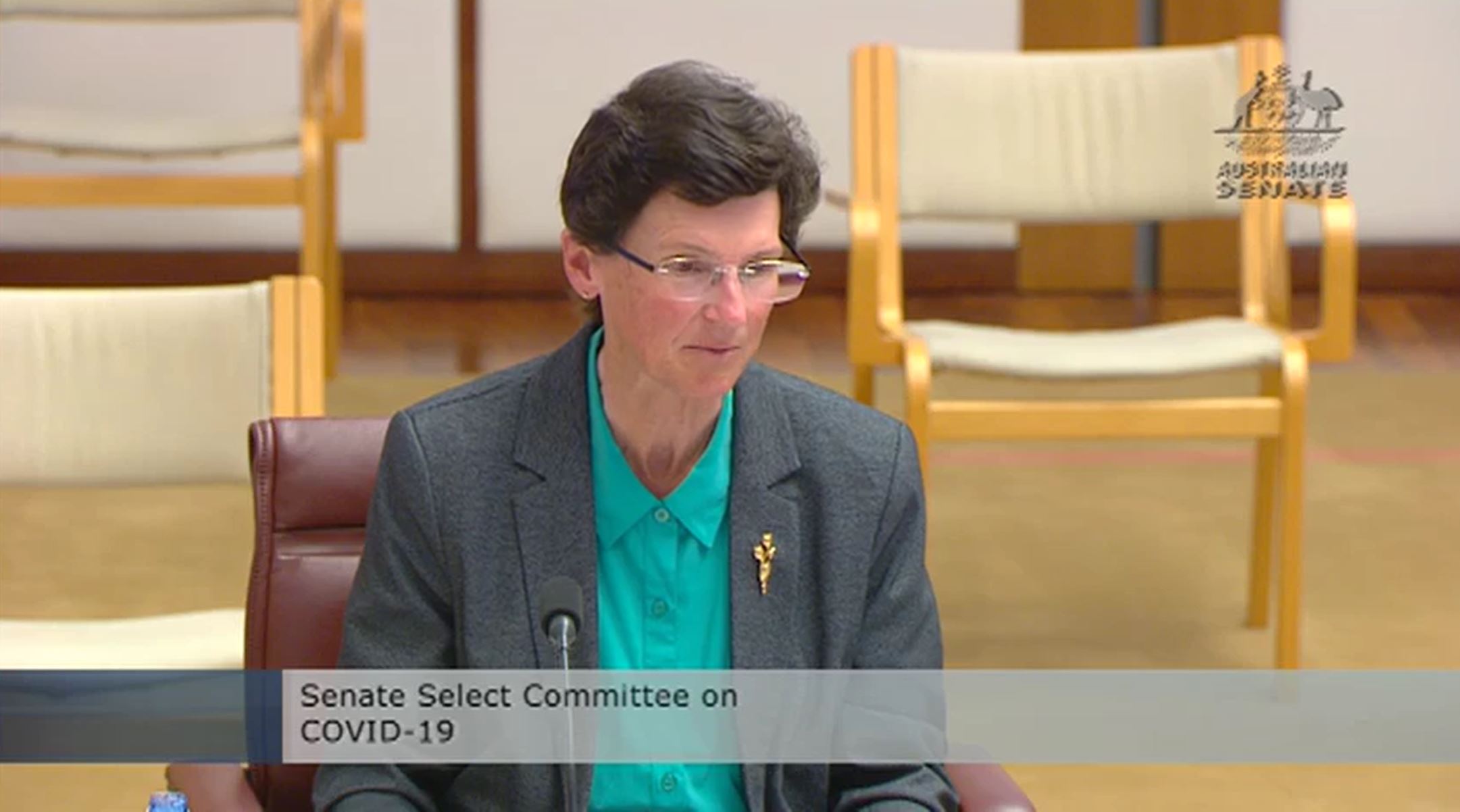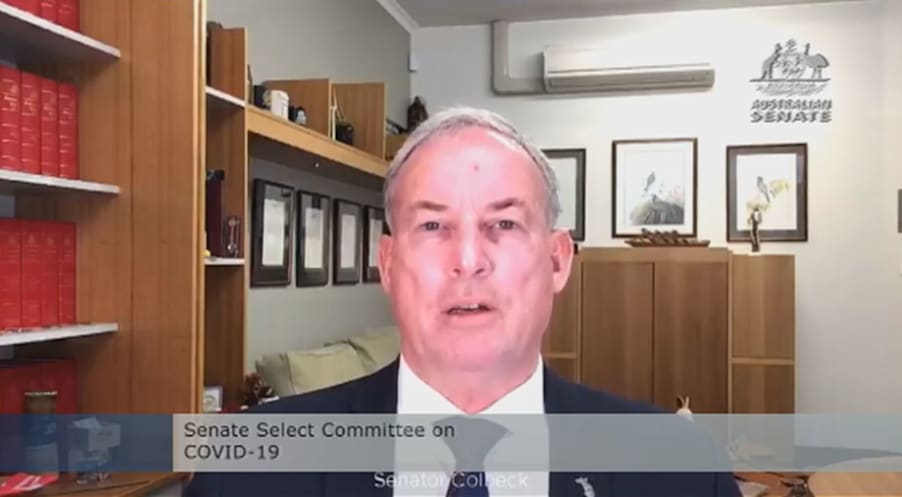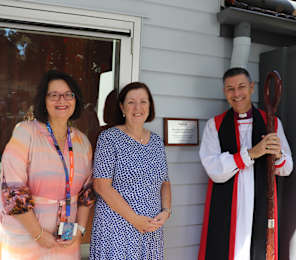Senator Richard Colbeck has acknowledged that the Federal Government “haven’t got it right” and could have taken more action to prevent the spread of COVID-19 in Victorian aged care homes.
Appearing again before the Senate Select Committee on the Australian Government’s response to the COVID-19 pandemic on Friday morning, he faced two-and-a-half-hours of non-stop grilling.
 Chair Labor Senator Katy Gallagher was on the offensive from the beginning, asking why the Minister was not aware of how many resident deaths and case numbers there were in Victoria (Amy Laffan, the Department of Health’s Acting First Assistant Secretary for Aged Care Reform and Compliance said there had been 258 deaths and were now 1,811 active cases).
Chair Labor Senator Katy Gallagher was on the offensive from the beginning, asking why the Minister was not aware of how many resident deaths and case numbers there were in Victoria (Amy Laffan, the Department of Health’s Acting First Assistant Secretary for Aged Care Reform and Compliance said there had been 258 deaths and were now 1,811 active cases).
Senator Colbeck was equally defensive, at times almost shouting and speaking over the various Senators as he denied their assertions.
Senate Chair goes after Minister on failure to prevent neglect of residents
Asked if he could imagine residents being evacuated from their homes, left soiled and hungry in their beds and staff traumatised by the experience of caring for them, Minister Colbeck referred to his earlier evidence to the committee on 4 August, saying it “should not have come to this”.
The Chair put it to the Minister that the Government’s response to the increasing community transmission in Victoria had not been enough.
The Minister angrily denied this, saying the only option to protect people would have been to isolate residential aged care away from the rest of the community which was not possible.
Senator Gallagher rejected his argument however, saying there had been a “double failure” to prevent the virus getting into homes and then again from stopping it spreading throughout facilities.
Minister argues community transmission too high to protect residents
The Minister argued no country had been able to keep COVID out of their aged care homes when there had been significant community transmission, but conceded that the Government’s response could have been improved.
“We haven’t got it right. We apologise for that. We are not happy that some things haven’t worked out as we might have hoped,” he said.
“It has cost lives and that is an absolute tragedy in every single circumstance. There were things that we could have done better. I acknowledge that.”
Government didn’t predict entire workforce would be furloughed at St. Basil’s
The Minister was also questioned intensely on why the Government had not been prepared for the entire staff at St. Basil’s Home for the Aged when they had the learnings from Dorothy Henderson Lodge and Newmarch House.
Senator Colbeck pointed out that in the Dorothy Henderson Lodge outbreak, only direct care workers were declared close contacts and furloughed.
Asked about a press release he issued in April which stated that the Government was prepared for the “worst case scenarios” of workforce shortages in aged care, the Minister said those views were based on what the Government “sincerely believed” at the time.
Senator Gallagher again went after the Minister, asking how what happened at St Basil’s could have taken him by surprise.
“Our anticipation was the care workforce and that was the clear inference from my point of view in respect of the documentation that we put out,” he repeated. “We did not anticipate that the entire management structure and the office structure, cleaning, catering staff would all be regarded as close contacts as part of an outbreak.”
No formal document for Government’s surge workforce strategy
The Minister also acknowledged there is no formal strategy for the sector’s surge workforce, saying it formed part of the Government’s “overall health response”.
After a long pause, he said: “There is not a document.”
“This is one of the most important things and all of you are saying you could not have foreseen what would happen with staff, yet on April 12 you told us you had done your worst-case scenario planning and had everything in order,” Senator Gallagher said in disbelief.
“And then the worst happens and you are telling me that there is not a workforce surge strategy? For the pandemic in aged care?”
“There are a series of contracts that were put in place and continue to build on as the demand for workforce has continued to grow within Victoria,” Senator Colbeck replied.
Senate Chair labels Government response “reactionary”
The Chair appeared to be taking a cue from Counsel Assisting at last week’s Royal Commission hearings into the COVID-19 outbreaks in aged care in her choice of words.
“But that is reactionary,” she argued. “You are reacting. A Band-Aid here and a Band-Aid there. I am after the plan. What was your workforce strategy plan, knowing back in March that workforce shortage would be a major challenge in aged care? Because this fundamentally goes to the neglect of older Australians in these homes where they have been significant outbreaks. The workforce has gone and their care has been compromised. Seriously compromised.”
 Professor Murphy interjected before the Minister could reply, again pointing out that aged care is part of the overall public health response.
Professor Murphy interjected before the Minister could reply, again pointing out that aged care is part of the overall public health response.
“This is also about a public health response and bringing together resources that are required,” the Minister repeated.
“In our national COVID-19 plan that was released, [in] the first document released issues such as workforce are a key consideration and that is why things like the hospital agreement are so important because all of those things contribute to the capacity, our capacity to respond to the workforce needs of the pandemic.”
Minister maintains aged care part of public health response
Senator Gallagher wasn’t going to let him off the hook however.
“You are the aged care minister and you are in charge of [aged] care. You want to keep people in their homes so surely you have a workforce strategy about supporting people to live in their homes?” she questioned.
“Aged care forms part of the overall public health response, chair,” Senator Colbeck answered. “And so, all of those things are brought together to develop the overall national strategy plan for response to pandemic. It is a public health response.”
Senator Gallagher was also appalled by the Minister’s revelation that the Cabinet was only briefed on the Victorian aged care outbreaks on 5 August – when the outbreaks had risen steadily throughout July.
Senator Colbeck maintained the Government was well-informed on the issue, though interestingly, he also couldn’t recall if he had briefed Cabinet on the findings of the Royal’s Commission’s Interim report last October.
Quality and Safety Commissioner questioned on failure to communicate information about St. Basil’s
Senator Colbeck was not the only official put under the microscope at the hearing.
 The Aged Care Quality and Safety Commissioner, Janet Anderson PSM, also came in for a tough time.
The Aged Care Quality and Safety Commissioner, Janet Anderson PSM, also came in for a tough time.
The Commissioner was grilled on why the Quality Commission failed to pass on information about the outbreak at St. Basil’s to the Department – after the previous evidence at the Senate hearing on Tuesday 4 August revealed that it took five days for the Department to learn of the outbreak.
Ms Anderson said she had learned the news from her staff on the afternoon of the hearing, but only briefed Minister Colbeck on the revelation three days later on Friday, 7 August.
Senator Gallagher questioned why it had taken so long – “That’s a pretty critical breakdown in your processes,” she pointed out.
Ms Anderson said she didn’t want to make the same mistake twice and wanted to be clear on the facts before she spoke to the Minister.
Quality Commission increasing surveillance of infection control
Ms Anderson also revealed the Quality Commission has conducted 74 spot checks in Victoria and 41 in New South Wales since early August with two-person teams visiting homes to check on infection control procedures.
“As a result of these visits we have identified some services who will need some follow up from us. So, it is an opportunity for regulatory action to flow from the visit,” she stated. “More recently we have also been having conversations with health services and they’ve indicated an interest in what we are doing and in working with us to amplify that role.”
Aged care residents still being sedated in outbreak sites and turned away from hospitals
Ms Anderson also said the Commission is also still responding to reports that aged care residents are being sedated in facilities experiencing outbreaks, saying they have come across a number of instances where restraints were being used to prevent COVID positive or negative residents with dementia from wandering.
They have also issued one notice to a provider and put in an independent adviser at their facility despite the operator refuting the allegations.
The Department of Health officials also admitted that COVID positive residents are still being turned away from hospitals (441 residents have now been admitted to hospital, 130 of those being COVID negative).
Mr Lye said with the health system under significant stress in Victoria, there were still “occasions where the issue has to be tackled”, but the Victorian Aged Care Response Centre (VARC) has progressed on resolving that problem.
Will the Department have resolved the issue by the time they reappear before the committee?










